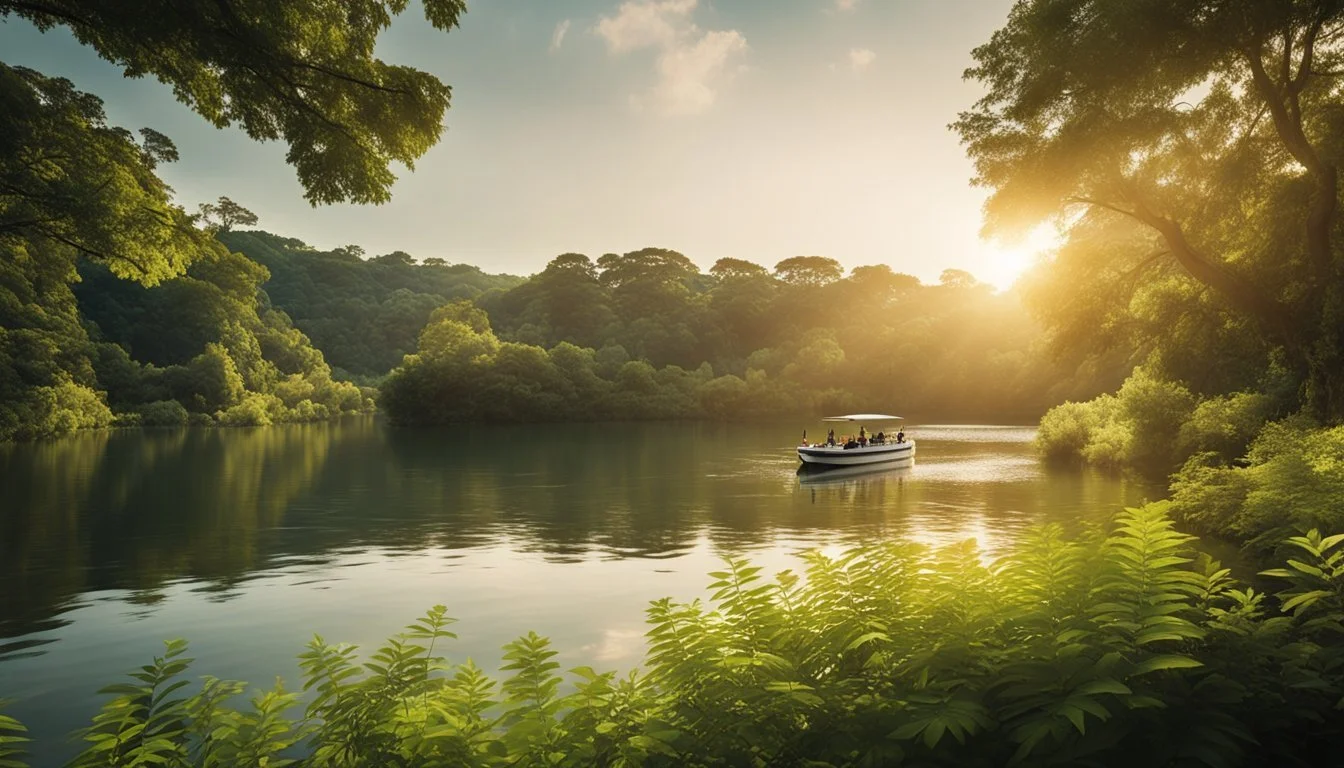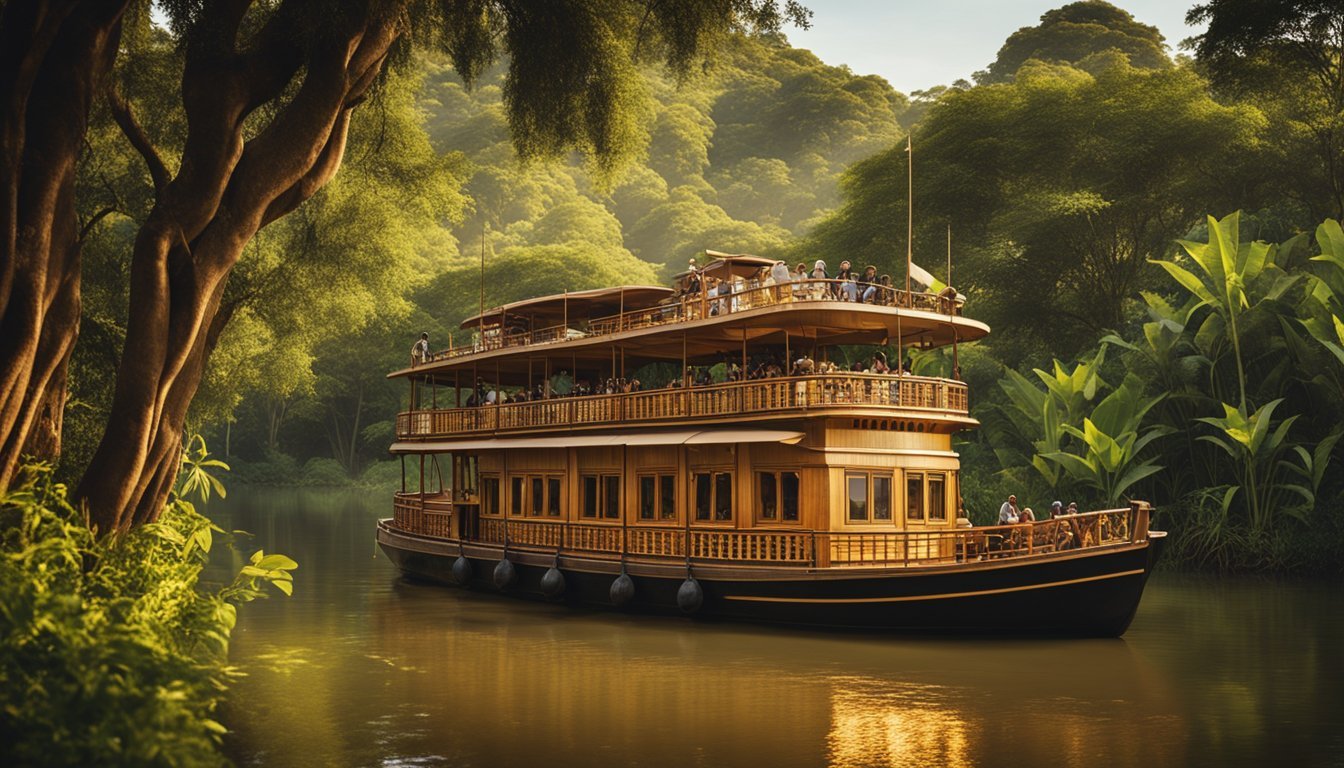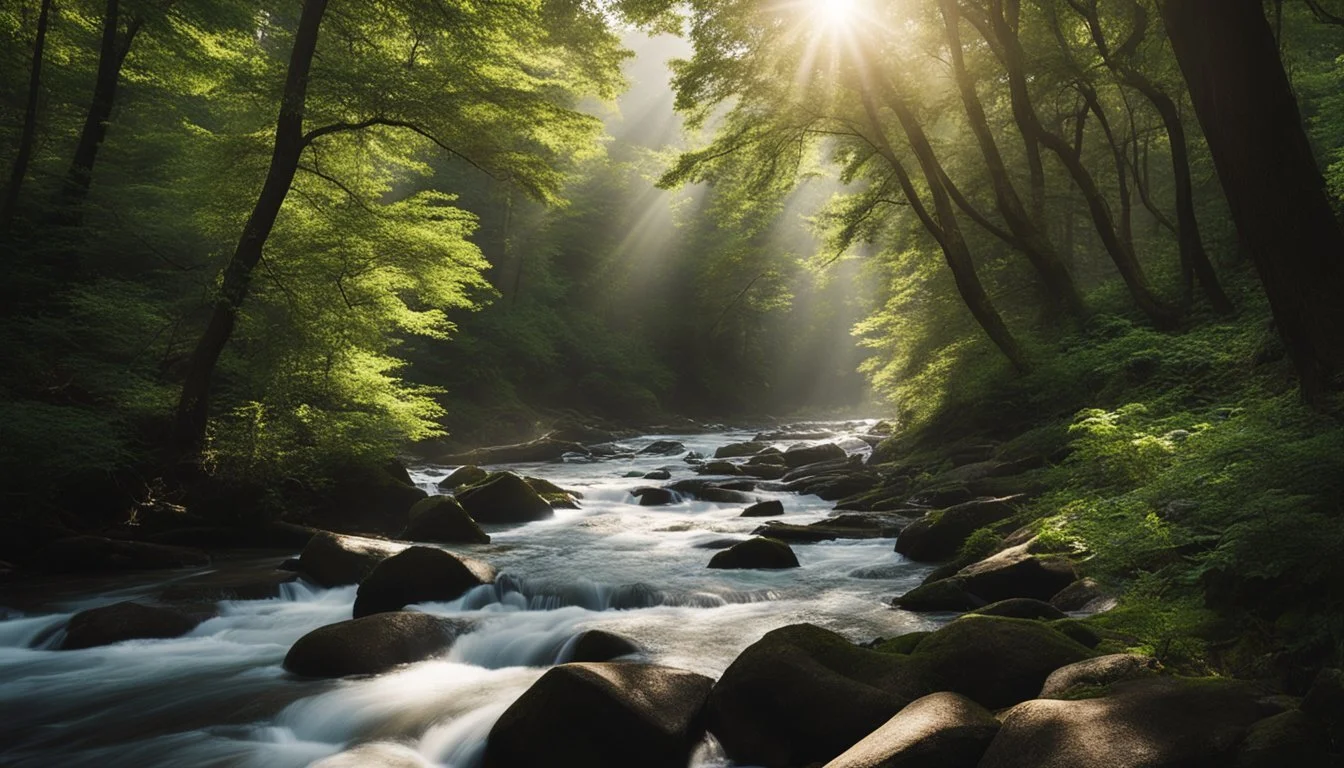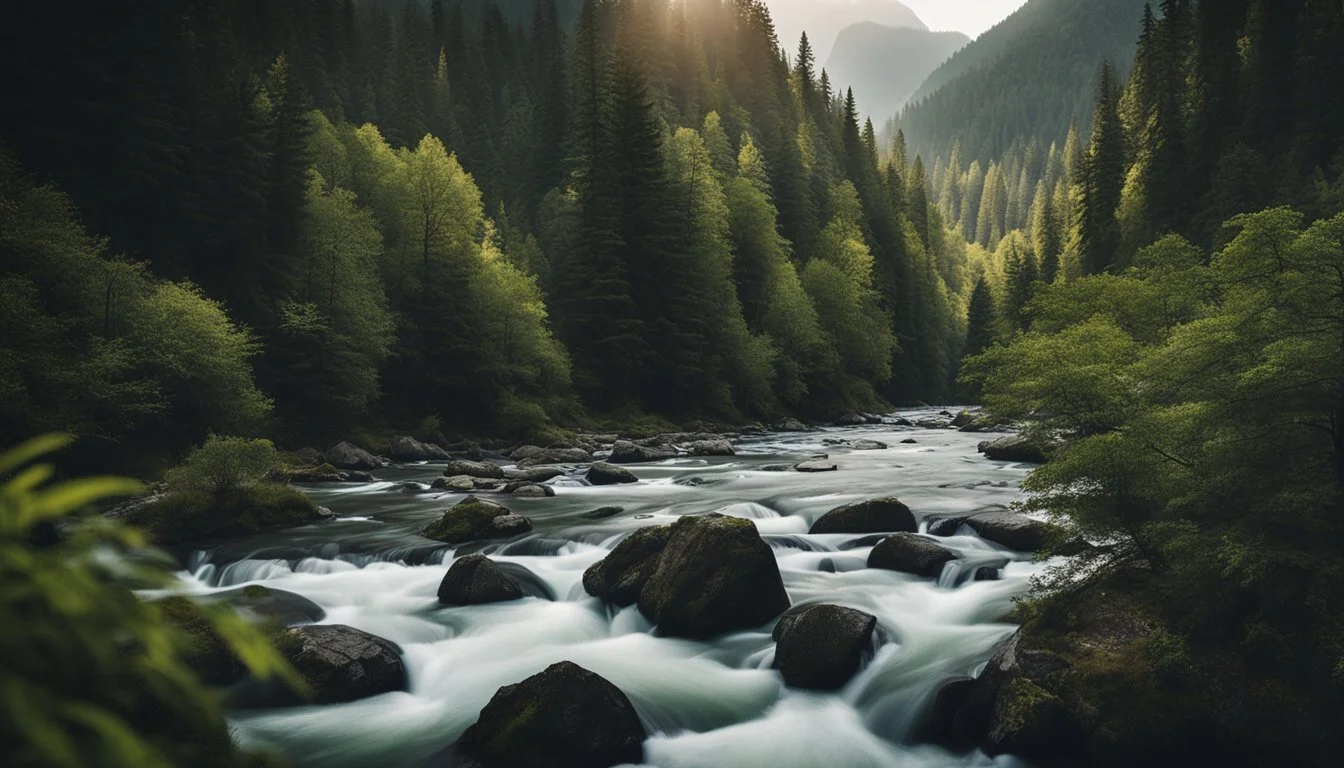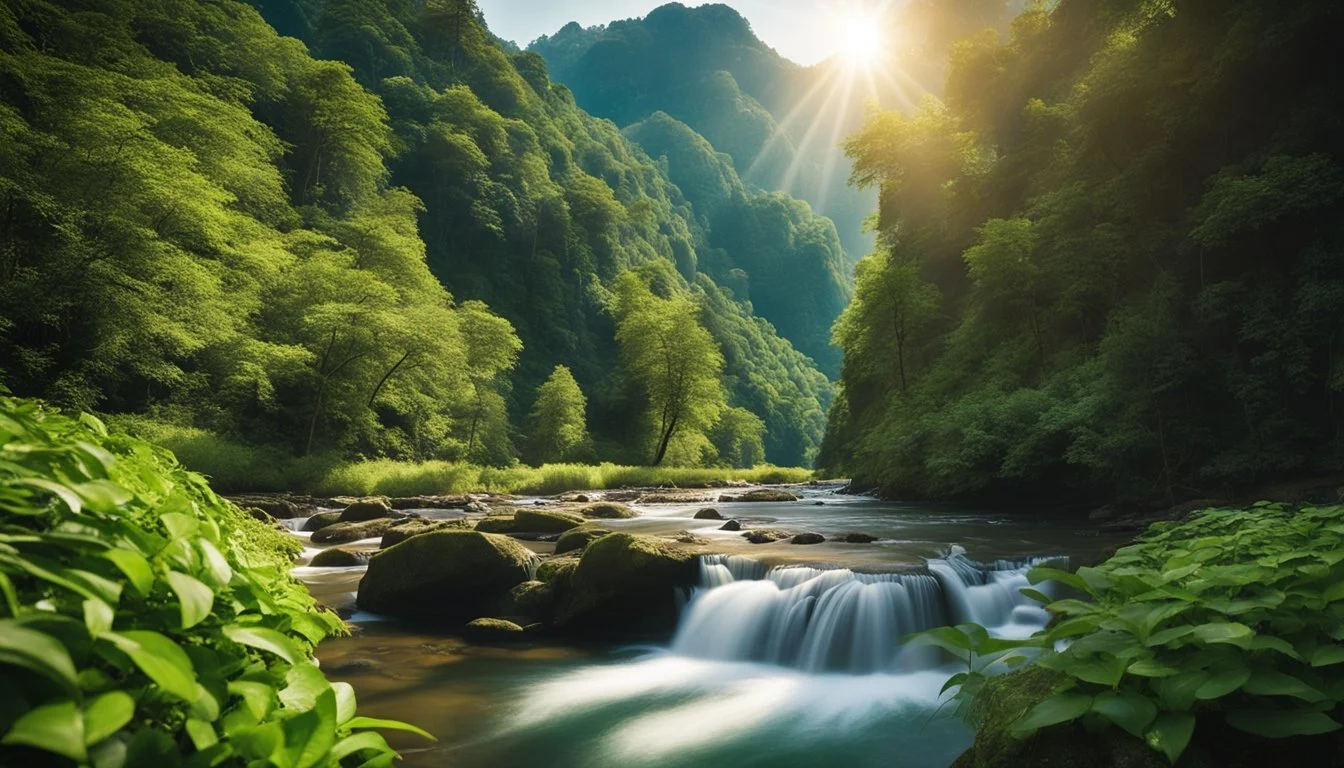9 River Journeys Documented on Film
Must-Watch Adventures
River journeys have long captivated the imagination, offering unique perspectives on the landscapes and cultures they traverse. Documentaries capturing these voyages provide viewers with an immersive experience, bringing to life the history, natural beauty, and societal interactions that define each waterway.
By showcasing nine distinct river journeys on film, this article reveals how these documentaries blend breathtaking visuals with compelling storytelling to transport audiences to different corners of the world. From serene rivers that meander through picturesque vistas to those that thunder through mighty falls, these cinematic river journeys highlight the enduring allure and significance of these natural wonders.
1) "Aguirre, The Wrath of God" (1972)
Werner Herzog's "Aguirre, The Wrath of God" is a paramount example of a river journey documented on film.
The movie follows Lope de Aguirre, a Spanish soldier, who leads a group of conquistadors down the Amazon River in search of El Dorado, the fabled city of gold.
Klaus Kinski stars as the unhinged and ruthless Aguirre, delivering a performance that is both unsettling and mesmerizing.
The film's production is notable for its challenging conditions, with the cast and crew facing real jungle environments, adding authenticity to the harrowing journey depicted. The visual imagery, especially the opening shot of the expedition winding down a mountain, is striking and sets the tone for the entire film's atmosphere.
Learn more about "Aguirre, The Wrath of God"
2) "The African Queen" (1951)
Directed by John Huston, "The African Queen" (1951) showcases a compelling river journey during World War I. Humphrey Bogart stars as Charlie Allnut, a gin-swilling Canadian riverboat captain. Katharine Hepburn plays Rose Sayer, a strait-laced English missionary.
The story unfolds in East Africa, where German troops set fire to a village, leaving Rose alone. Charlie takes her aboard his riverboat, The African Queen.
The mismatched pair forms an unlikely alliance to navigate a treacherous river. They aim to attack a German gunship, blending personal and political turmoil.
Their journey is fraught with natural and mechanical challenges. From crocodiles to tsetse flies and hostile weather, their survival instincts are constantly tested.
The film was adapted from C. S. Forester's 1935 novel, featuring cinematography by Jack Cardiff and music by Allan Gray. The on-screen chemistry between Bogart and Hepburn adds depth to the adventurous narrative.
"The African Queen" remains a classic, celebrated for its direction, performances, and historical context. It is a significant piece of Hollywood's adventure film genre.
For more information, visit the Wikipedia page.
3) "Apocalypse Now" (1979)
"Apocalypse Now" is a 1979 American epic war film directed by Francis Ford Coppola. The movie, loosely based on Joseph Conrad's novella "Heart of Darkness," shifts the setting from the Congo to the Vietnam War. The film follows Captain Willard, played by Martin Sheen, on a mission to find and assassinate the renegade Colonel Kurtz.
As Willard travels up the Nung River, the journey represents a descent into chaos and madness. The river acts as a metaphorical pathway to Kurtz's domain, which feels increasingly removed from reality. This journey underscores the horror and futility of war, as Willard encounters various bizarre and surreal situations along the way.
Colonel Kurtz, portrayed by Marlon Brando, resides deep within the Cambodian jungle, where he has established his own rogue compound. Kurtz's cult-like followers view him as a godlike figure, an indication of his complete disconnect from conventional military order and decorum.
The film's depiction of the river journey adds to its dark and intense atmosphere. It highlights the psychological and moral degradation experienced by soldiers in the Vietnam War, making it a poignant part of the film.
For more information on "Apocalypse Now," visit the Wikipedia page.
4) "Deliverance" (1972)
"Deliverance" tells the harrowing tale of four businessmen from Atlanta embarking on a canoeing trip.
The film was largely shot on the Chattooga River, which borders Georgia and South Carolina. This river stood in for the fictional Cahulawassee River.
Much of the filming took place in northeastern Georgia, particularly around Rabun County. The crew also filmed at the Jocassee Dam and the now-submerged Mount Carmel Baptist Church in North Carolina.
The cast included Jon Voight, Burt Reynolds, Ned Beatty, and Ronny Cox. Notably, this film contains some of the most intense on-screen moments ever filmed in the American wilderness.
Filming "Deliverance" was challenging due to the rugged and remote locations. The authentic environment added to the film's gritty realism.
For more information, visit IMDB.
5) "Heart of Darkness: A Filmmaker's Apocalypse" (1991)
"Heart of Darkness: A Filmmaker's Apocalypse" documents the intense and chaotic journey of making the film "Apocalypse Now." Directed by Fax Bahr, George Hickenlooper, and Eleanor Coppola, the documentary highlights the challenges faced during production.
The journey up the river is a central theme in "Apocalypse Now." It parallels Joseph Conrad's novel, "Heart of Darkness," which explores human nature and moral ambiguity.
The documentary captures the tension and drama behind the scenes. Financial and emotional strains, equipment failures, and unpredictable weather added to the struggle.
Personal conflicts and the artistic vision of director Francis Ford Coppola are also explored. The crew's perseverance under adverse conditions is a testament to their dedication.
For more information, visit the IMDb page.
6) "Mosquito Coast" (1986)
"Mosquito Coast" follows inventor Allie Fox, played by Harrison Ford, as he relocates his family from the United States to the jungles of Central America. Convinced he can create a utopian society, Allie transforms the wilderness into what he believes is paradise.
The film stars Helen Mirren, River Phoenix, and Jadrien Steele. Directed by Peter Weir, it is based on Paul Theroux's 1981 novel of the same name.
Allie’s relentless pursuit of his vision leads to conflict and struggles, showcasing both his ingenuity and his unwavering, often dangerous, idealism.
"Mosquito Coast" highlights themes of human nature, idealism, and the consequences of hubris. The film explores both the beauty and brutality of the jungle, creating a captivating backdrop for the family's journey.
For more information, visit "The Mosquito Coast" on IMDb.
7) "River of No Return" (1954)
"River of No Return" is a 1954 American Western musical film. Otto Preminger directed the film, which stars Robert Mitchum and Marilyn Monroe. The screenplay by Frank Fenton is based on a story by Louis Lantz.
The plot is set in the 19th century American West. It follows a farmer recently released from prison, his young son, and a saloon singer. They must navigate a river while overcoming their personal differences.
Robert Mitchum plays the rugged cowboy. Marilyn Monroe portrays Kay Weston, a saloon singer. Their performances highlight the film’s unique blend of Western and musical genres.
The film was shot on location in the Canadian Rockies. The use of Technicolor and CinemaScope adds to the visual appeal, capturing the rugged landscapes beautifully.
For more information about "River of No Return," visit the IMDb page.
8) "The River Wild" (1994)
"The River Wild" is a 1994 American thriller film directed by Curtis Hanson and written by Denis O'Neill. The film stars Meryl Streep, Kevin Bacon, and David Strathairn.
The plot centers on a family that embarks on a white-water rafting trip on the Salmon River in Idaho. Gail, played by Meryl Streep, is a rafting expert.
The family's holiday takes a dark turn when they come across a pair of armed fugitives, played by Kevin Bacon and John C. Reilly. The film combines elements of adventure and suspense.
The visually stunning river scenes are a highlight of the film, showcasing the wild beauty of the river landscape. The film received praise for its intense river sequences and strong performances.
For more information on "The River Wild," visit Wikipedia.
9) "The Revenant" (2015)
"The Revenant" focuses on the harrowing journey of frontiersman Hugh Glass, portrayed by Leonardo DiCaprio. This intense film, directed by Alejandro Iñárritu, chronicles Glass’s struggle for survival after being mauled by a grizzly bear and left for dead by his fellow trappers.
The film is visually captivating, utilizing real landscapes to enhance its storytelling. Much of the movie was filmed in Kananaskis Country in the Canadian Rockies, west of Calgary. The scenes vividly convey the rugged and unforgiving terrain that Glass had to traverse.
One notable scene, the Arikara ambush, was filmed along the Bow River at the Chief Goodstoney Rodeo Centre near Morley. This location, along with other spectacular natural backdrops, plays a critical role in immersing viewers in the movie’s historical setting.
"The Revenant" also stands out for its realistic portrayal of 19th-century American frontier life. The film draws inspiration from true events, showcasing Glass’s relentless quest for vengeance and survival.
For more information about "The Revenant," visit Wikipedia or IMDb.
Cultural Significance of River Journeys
Rivers have played a crucial role in shaping human civilizations and cultural identities. Through historical events and daily interactions, rivers symbolize many aspects of societal values and beliefs.
Historical Context
Rivers have always been lifelines for human settlements due to their importance in providing fresh water, food, and transportation routes. In history, many major cities, like Cairo on the Nile and London on the Thames, grew around rivers.
Exploration and trade were also driven significantly by rivers. For instance, the Mississippi River played an essential role in the westward expansion of the United States, symbolizing the spirit of exploration and the promise of vast, untamed lands.
Rivers also served as crucial battlegrounds in historical conflicts. The strategic significance of rivers in military campaigns cannot be understated. Control over riverways often meant control over critical resources and movements.
Representation in Different Cultures
Rivers are often viewed as sacred in various cultures. The Ganges in India is considered holy; it symbolizes purity and is integral to religious rituals. Similarly, the Amazon River is deemed the "River Sea" by local indigenous communities, representing life and sustenance.
In literature and folklore, rivers frequently appear as metaphors. They symbolize life's journey, transformation, and the passage of time. Authors like Mark Twain have famously depicted the Mississippi River to explore themes of freedom and change.
In modern media, rivers retain their iconic status. TV series like "World's Most Scenic River Journeys," narrated by Bill Nighy, highlight how these waterways continue to shape both landscapes and the lives of people who reside near them.
Cinematic Techniques in Documenting River Journeys
When documenting river journeys, filmmakers focus on effective camera work and sound design to capture the essence and dynamics of the river and its surroundings. These elements work together to create an immersive experience for viewers.
Camera Work and Angles
Camera work plays a critical role in showcasing the unique aspects of river journeys. Using wide-angle shots, filmmakers capture the vastness of the river, emphasizing the scale and the natural beauty of the landscape. Tracking shots, achieved by mounting cameras on boats or drones, follow the course of the river, allowing viewers to experience the journey firsthand.
Close-up shots highlight significant features such as wildlife, water currents, and interactions between participants. Various camera angles, including high-angle and low-angle shots, offer different perspectives of the river and its banks. High-angle shots can show the river’s trajectory and surroundings, while low-angle shots provide an intimate view of the water flow and obstacles encountered.
Sound Design
Sound design enhances the visual storytelling by using both natural river sounds and added audio effects. The sound of flowing water, birds, and wind creates a serene atmosphere and situates the viewer in the river’s environment. Ambient sounds are crucial in conveying the mood and energy of the journey.
In scenes featuring dialogue, clear audio capture is essential. Using directional microphones helps isolate voices from environmental noise. Additionally, soundtracks often accompany scenes to evoke emotions and heighten dramatic moments. Music can underscore the adventure's intensity or the tranquility of calm waters.
Careful balancing of natural soundscapes and background music ensures that neither element overpowers the other, maintaining an authentic yet engaging aural experience.
Environmental Impact of River Journeys
Documenting river journeys illuminates both the efforts to conserve these vital ecosystems and the ecological challenges they face. These films serve to educate audiences on the importance of rivers and the actions needed to protect them.
Highlighting Conservation Efforts
Films on river journeys often showcase the work of scientists and activists in protecting river ecosystems. They provide insights into various conservation projects, such as habitat restoration and pollution reduction. For example, by showing the reintroduction of native species or the construction of fish ladders, viewers see practical steps taken to maintain river health.
Documentaries may also focus on community-led initiatives. Local communities are frequently portrayed coordinating efforts to clean and protect their water sources, which highlights the significant role they play in conservation. Demonstrating the success of these initiatives helps inspire similar actions globally.
Depicting Ecological Challenges
These documentaries bring attention to the numerous threats facing rivers. Pollution from industrial runoff, agricultural chemicals, and plastic waste are commonly depicted as severe issues. The films often highlight how these pollutants affect local wildlife and contribute to broader environmental problems, like the contamination of drinking water.
Climate change is another prominent theme. Rising temperatures and shifting precipitation patterns drastically alter river ecosystems, affecting both fauna and flora. Documentaries illustrate the resulting changes in river flow and the increased frequency of extreme weather events like floods and droughts. By emphasizing these challenges, the films encourage viewers to understand the urgency of addressing these issues.

